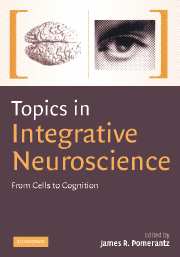Book contents
- Frontmatter
- Contents
- List of contributors
- Preface
- Overview of neuroscience, choice and responsibility
- 1 Neuroscience, choice and responsibility
- PART I HIGHER ORDER PERCEPTION
- PART II LANGUAGE
- Introduction to Language Section
- 5 Varying degrees of plasticity in different subsystems within language
- 6 The functional architecture of speech perception
- 7 Varieties of silence: the impact of neuro-degenerative diseases on language systems in the brain
- 8 Why is language unique to humans?
- PART III MEMORY SYSTEMS
- PART IV SENSORY PROCESSES
- Index
- Plate section
- References
7 - Varieties of silence: the impact of neuro-degenerative diseases on language systems in the brain
Published online by Cambridge University Press: 08 August 2009
- Frontmatter
- Contents
- List of contributors
- Preface
- Overview of neuroscience, choice and responsibility
- 1 Neuroscience, choice and responsibility
- PART I HIGHER ORDER PERCEPTION
- PART II LANGUAGE
- Introduction to Language Section
- 5 Varying degrees of plasticity in different subsystems within language
- 6 The functional architecture of speech perception
- 7 Varieties of silence: the impact of neuro-degenerative diseases on language systems in the brain
- 8 Why is language unique to humans?
- PART III MEMORY SYSTEMS
- PART IV SENSORY PROCESSES
- Index
- Plate section
- References
Summary
Introduction
The human faculty of language is a breathtaking skill. It allows us to communicate observations, thoughts, wishes, intentions, emotions, etc., to another person in the same room (by speaking), to a person in the next room (by shouting), to someone thousands of kilometers away (by speaking on the telephone or sending a fax), and even to future generations (by writing stories, poems, books, or scientific articles). Language is characterized by almost infinite variation and creativity. Every person alive today (with the exception of pre-verbal infants and people with severely impaired language skills) probably utters a number of sentences every day that he or she has never produced before. What other form of behavior could compete with this for degree of novelty and originality?
Language is typically considered to involve a set of interacting, but somewhat separate, domains of ability or knowledge. These include the sound structure of the language (phonology); word meanings (semantics); the ways in which individual morphemes combine to create complex words (morphology); the ways in which morphologically simple or complex words combine to create phrases and sentences (syntax); and finally, at least in the relatively brief time since a substantial proportion of the world's population has become literate, knowledge of how words are written in the speaker's language (orthography).
How and where does the brain represent and process this complex set of abilities? Because language is unique to humans, we can only learn about this topic by studying humans.
- Type
- Chapter
- Information
- Topics in Integrative NeuroscienceFrom Cells to Cognition, pp. 181 - 205Publisher: Cambridge University PressPrint publication year: 2008
References
- 3
- Cited by

